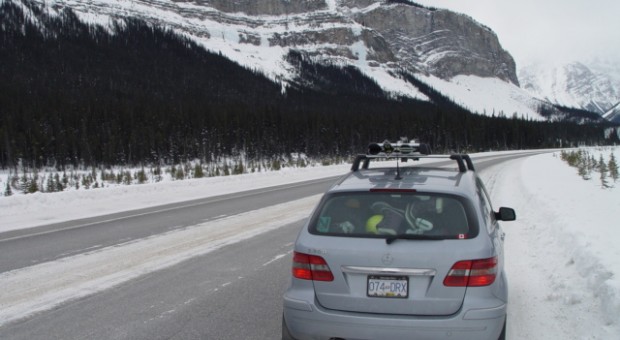
Winter is here once again, which can spell trouble for your diesel engine. Gas-powered vehicles tend to be unaffected by cold weather because they use spark plugs to trigger the combustion process, which turns the fuel into mechanical energy. But diesel engines use extreme heat to generate even more power. The air-fuel mixture in a diesel engine needs to reach 2,800° F. The engine must heat the incoming air and fuel using compression.
If the fluids fail to reach the proper temperature, the engine won’t start. This can also lead to engine hesitation, stalling, and permanent engine damage. Experts say it is five times harder to start a diesel engine at 0°F (-17°C) than it is to start one at 80°F (26°C).
From cold starts to reducing wear and tear on parts like fuel injectors, use this guide to get your diesel truck ready for winter weather.
Check Your Battery
The battery will be one of the first things to go when temperatures drop. Inspect your battery for corrosion and damage now that summer is over. Test its capacity using a battery test kit to see how much of a charge it can hold. Batteries tend to lose capacity during the winter months. The engine won’t start without a charge. The battery powers the glow plugs, which heat the air and fuel.
Consider buying an engine warmer to keep your battery insulated from the cold. You can also park it in an insulated garage for added protection.
Change Your Fuel
Diesel fuel tends to gel during the winter, which can damage the engine in a number of ways. The fuel acts as a lubricant for various parts and components, including the diesel fuel injectors. When the fuel gels, it loses its lubricating properties, which can lead to corrosion. The fuel can clog certain parts and components and will eventually deprive the engine of fuel, leading to poor fuel efficiency, stalling, and hard starts. When the injectors fail, it can also cause problems with the injection control pressure (ICP) sensor, especially on the Ford 7.3L Powerstroke. Test the sensor to see if your injectors are working properly before winter arrives and buy a replacement ICP sensor 7.3 to fix the issue.
Source: Ambartsumian Valery/ shutterstock.com
As the temperature drops, you’ll want to slowly transition to winter-grade diesel fuel, which is a mix of no. 1 and no. 2 grade fuel. No. 1 grade fuel mainly consists of kerosene and doesn’t contain paraffin, which helps prevent the fuel from gelling in the winter. Many gas stations automatically swap out summer-grade fuel for a winter blend. Store your fuel in airtight containers in temperature-controlled environments. Be sure to use an anti-gel fuel additive as well.
Drain Your Water Separator
We all know what happens when water drops below freezing. Keep water out of your fuel system by draining the water separator at the end of every shift. Water can also collect on the fuel tank as the air inside changes temperature. Fill the fuel tank to capacity every night to prevent condensation. Drain the water separator at the fuel filter as well to keep water out of your fuel. Water reduces the lubricating properties of the fuel, which increases the risk of corrosion.
Replace Your Diesel Fuel Filter
The fuel filter removes water, debris, and toxins from the fuel to make it burn more efficiently. Coincidentally, it is also where the fuel is most likely to gel. The fuel needs to pass freely through the filter to reach the engine, which becomes increasingly difficult as the winter goes on. Consider replacing the fuel filter before the cold sets in to start off on the right foot. If you plan on being onsite or on the road for long stretches at a time, bring along an extra fuel filter or water separator in case your current one freezes over.
Source: Gargantiopa/ shutterstock.com
Swap Out the Oil
The oil is the main source of lubrication for the engine. Without it, various parts would grind together. Use a lighter weight synthetic oil in the winter to improve lubrication. Let the engine idle for up to five seconds before hitting the road. This gives the oil enough time to circulate throughout the engine.
Watch the Temperature of Your Coolant
You may not think to check the coolant in the winter, considering how cold it is outside. But every diesel engine uses coolant regardless of the weather. It is designed to prevent the engine from overheating. But there is a risk of overcooling in the winter, which leads to poor fuel efficiency, white smoke coming from the exhaust, and poor aftertreatment performance, which can damage the exhaust gas recirculation (EGR) system. The EGR cools the recycled exhaust gas before it reenters the combustion chamber. If the air gets too cold, the engine will struggle to perform.
Check the temperature of your coolant regularly to prevent it from freezing. Never add water to the coolant system. Consider replacing the EGR coolers on your engine if you’ve had problems in the past. The EGR is known to cause problems on the Powerstroke 6.0L.
You’ll need to adjust your daily driving and maintenance routine when the temperature drops. The cold weather can put additional pressure on virtually every aspect of your vehicle. Keep these tips in mind to avoid damaging your engine and stock up on new diesel truck parts to prepare for anything that comes your way.
















